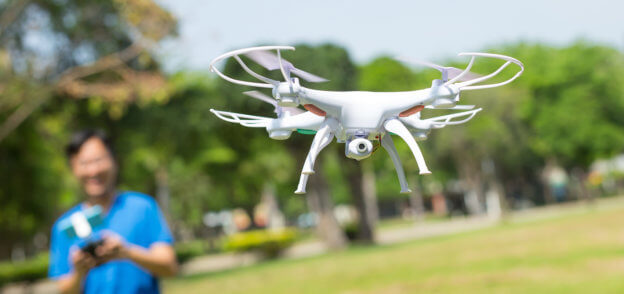Drone sales are on the rise. According to Business Insider, consumer drone shipments will quadruple in the next five years, as drones get easier to operate by beginners and competition causes prices to drop. In addition, big businesses like Amazon and Walmart are beginning to test pilot programs using delivery drones. This technology can cause a dilemma for communities. How can a community ensure safety? What about issues of privacy? Should damage to property occur, how is responsibility assigned?
All communities have different standards based on the needs of the membership. This article will help your Board make the most appropriate on-site community management decision regarding private and commercial use of drones.
-
Consider all sides of the issue
When implementing any new regulations, your Board should listen carefully to all sides of the matter before making a decision. Invite the membership to a public Board meeting to discuss their feelings about the use of drones– both positive and negative. This open forum enables residents to share what is important to them and will help the Board craft a thoughtful policy. Your community association management company can help you coordinate the meeting.
-
Uphold all federal, state and local regulations
As with any issue, federal, state and local restrictions take precedence when crafting wording for drone usage guidelines. The FAA issued a comprehensive set of rules for unmanned aircraft systems (aka “UAS,” aka drones) that outlines how drones can be used legally in American airspace. While your own community guidelines will apply within the limits of your community’s property lines, understanding federal regulations will help you gain a greater understanding of the scope your rules should cover. As always, on-site community management rules can never defy federal, state or local laws. Check with your attorney to learn more about how drone laws affect your area directly.
-
Update your community’s rules & regulations
When your Board reaches a decision on guidelines for drone usage, remember to update your community’s Rules & Regulations document as soon as possible. Be sure to clearly define what distinguishes a commercial or retail UAS models from a light-weight, remote-control toy. Commercial and high-end consumer drones differ from light-weight, plastic toys operated by remote control. Research size and weight distinctions and articulate these specifics in your Rules & Regulations. As mentioned above, begin drafting your guidelines by referring to state, local and federal regulations and consult your attorney and community association management company to help you craft the appropriate language.
-
Communicate new rules to residents
Depending on the level of interest in drone usage in your community, tailor your communications to provide homeowners with sufficient information about guidelines, restrictions, and penalties for improper use. Your communications might include a write-up in your community’s newsletter or a detailed notice you send to all residents. Your community management company can assist in developing the most appropriate messaging for your community.
If your community decides to allow drone operation within your community, here are some guidelines to help you ensure that drone usage is safe for residents and property:
- Establish designated take-off/landing sites (ex. common areas, driveways)
- Restrict drone usage to daylight hours
- Set an age limit for minors who must be accompanied by an adult
- Amend CC&Rs to clearly state that the Association is not liable for any drone damage caused by residents
As community management extends to cover airspace, Boards and Associations must work together to generate solutions that work best for each community. Your management company can help. Contact us at (949) 833-2600 to discuss how to create guidelines for drones that enable your residents to enjoy their new aircraft while also protecting the Association.
